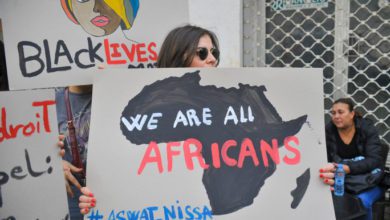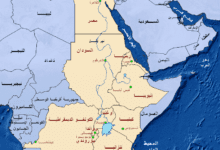
Arab Spring and Environmental Change
Few years before the eruption of Arab Spring events, the Middle East faced unprecedented drought waves reducing farming jobs and food supply.
This fact has raised an important question.
Can the Middle East turmoil be partially attributed to environmental reasons? And to what extent?
The sequence of events in Egypt and Syria can provide an example on the possible consequential nature between the two events in question.
In August 2010, following a strong heat wave impacting Russia, the Prime Minister at that time Vladimir V. Putin decided to ban all country exports of grain.
According to a report by Andrew E. Kramer in NY Times, the Russian drought, in addition to the same in parts of the European Union, as well as floods in Canada, have increased wheat prices by about 90 per cent.
Egypt, being the biggest wheat importer in the world, was one of the most affected countries by the sharp increase in prices. An increase which was followed few months later by one of the Arab Spring upraises on 25 January 2011.
Protests and media coverage of people dying while waiting in long queue to buy government subsidized bread have been one of the milestones of the buildup of public opinion anger that has erupted later.
This was not the only case in the Middle East where the events of environmental change impacting food supply and social turmoil have been sequential. A study published in Proceedings of the National Academy of Sciences, explains that ‘There is evidence that the 2007−2010 drought contributed to the conflict in Syria. It was the worst drought in the instrumental record, causing widespread crop failure and a mass migration of farming families to urban centers’
Drought years in Syria have been followed by a social turmoil and civil war starting from 2011 and with no light at the end of the tunnel until now.
While mainstream views in the Middle East do not emphasis much on environmental change as a factor that have escalated political instability, some policy makers worldwide have different view.
The quadrennial defense review issued by US department of Defense in 2014 identifies environmental change to have a ‘threat multiplier’ nature on impacted countries. By virtue of this nature, climate change affecting food supply and farming jobs can have a multiplier effect on existing stressors: ‘Climate change may exacerbate water scarcity and lead to sharp increases in food costs. The pressures caused by climate change will influence resource competition while placing additional burdens on economies, societies, and governance institutions around the world. These effects are threat multipliers that will aggravate stressors abroad such as poverty, environmental degradation, political instability, and social tensions – conditions that can enable terrorist activity and other forms of violence’.
Accordingly, understanding the future of environmental change would be integral to anticipating possible socio-political instability in the region.
A study published by the World Bank shows that environmental change driven drought is developing further: ‘The region has the greatest expected economic losses from climate-related water scarcity, estimated at 6–14 per cent of GDP by 2050’.
Considering that years of turmoil in Middle East did not advance any of the causes which provoked millions of protesters to the streets asking for social and political reform, the study results indicate even higher future potential of social unrest. This potential might be to some extent offset by another factor which came as a result of years of turmoil and instability caused by Arab Spring.
Under the influence of huge human price of turmoil, public opinion views in the Middle East have drastically changed. More and more sectors of society are adapting conservative views to political reform, and linking it with instability. While this change cannot be ignored in the short term, long term view to future of the region should consider that inherent causes behind the eruption of social unrest are still working in the background, and are accompanied by a threat multiplier which is becoming stronger by the year.







